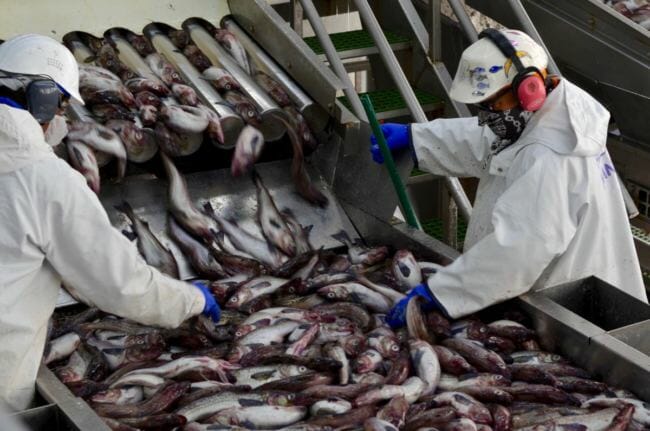
You’ve probably heard about the blob, the pool of warmer-than-normal water that wreaked havoc on fish and wildlife in the North Pacific.
But you might not have heard about what’s happening in the Bering Sea, at the Pacific’s northern limits.
After several years of blob-related warmth, water temperatures off much of Alaska’s coast have returned to normal. But not in the Bering Sea, where in some places they’re still as much as 9 degrees Fahrenheit higher.
“The blob faded away. The Alaska marine warmth did not,” John Walsh, chief scientist at the Fairbanks-based International Arctic Research Center, said.
Federal scientists are now trying to determine what the effects could be, since the Bering Sea is home to some of the world’s largest commercial fisheries. The $400 million-a-year annual pollock catch is processed into popular items like fish sticks, imitation crab and McDonald’s Filet-O-Fish sandwiches.
In the winter, vast expanses of ice also help insulate coastal Bering Sea villages from storms. And the ice can be a platform for subsistence hunters searching for seals and walrus.
Except that last winter, there was far less ice in the Bering Sea than scientists have ever seen. It’s likely the ice’s extent was at its lowest in at least 150 years, based on historical records, according to Rick Thoman, a Fairbanks-based climate expert with the National Weather Service.
Part of the reason was abnormally warm water. Scientists think the blob spilled some of its heat into the Bering Sea, which was also warmed by natural variation: consistent warm winds from the south.
The heat has penetrated deep into the water, meaning that it will take longer for the Bering Sea to cool off. It’s also slowed the formation of ice, which means the water is absorbing even more heat – since ice, when it’s present, helps reflect sunlight.
Scientists aren’t sure exactly what the changes will mean for fish.
But they’re trying to figure it out, in part because the Bering Sea produces nearly half of the country’s annual catch of fish and shellfish.
“The Bering Sea is an extremely productive ecosystem that produces immense amounts of fish,” Phyllis Stabeno, a Seattle-based oceanographer with the National Oceanic and Atmospheric Administration, said. “And that’s part of NOAA’s mission, to manage these types of things.”
If the Bering Sea changes enough, there will be species that benefit and species that suffer, Stabeno said.
Scientists initially thought pollock would thrive in warmer water, she added. But Stabeno said it turns out the heat may not be so good for pollock’s food, a type of plankton.
As water temperatures change, researchers are also seeing shifts in which species are found where.
“The ecosystem is always more complicated than we think,” Stabeno said. “We do know that there will be winners and there will be losers if the system changes enough. But we can’t say who they are at this point.”
A paper published earlier this year, with Thoman and Walsh among the authors, said the warmer Bering Sea temperatures can’t be explained without human-caused climate change, just like the blob. But some of the warmth also appears to stem from natural fluctuations.
One other thing researchers have noticed is that the Bering Sea seems to be oscillating between warm and cold for periods of multiple years, when in the past, individual years could be more variable, Stabeno said. Scientists refer to the longer warm and cold periods as “stanzas.”
The current Bering Sea warmth doesn’t appear to be irreversible – it hasn’t reached a “tipping point,” Walsh said. But climate change is heating the Arctic twice as fast as the rest of the world, and the waters off Alaska’s coast are expected to steadily warm as part of that trend.
“I do see this march toward more frequent, unprecedented warm events,” Walsh said. But, he added, “it’s not going to be a straight line.”
Pollock fishermen are watching the Bering Sea temperatures, said Stephanie Madsen, who leads an industry group, the At-Sea Processors Association.
“But honestly, for our fishery, we haven’t seen any dramatic shifts or changed the way that we prosecute it,” Madsen said. Over the long term, she added, “we’re not extremely nervous.”
“We expect some changes. But we don’t believe there’s an imminent crash,” Madsen said.




